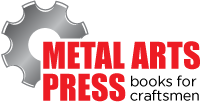- Preface
- Acknowledgements
- Chapter 1: Welding Overview
- Chapter 2: Safety
- Chapter 3: Terms, Joints, & Edge Preparation
- Chapter 4: Tools & Welding Tables
- Chapter 5: Shielded Metal Arc Welding
- Chapter 6: Wire Feed Welding
- Chapter 7: Gas Tungsten Arc Welding
- Chapter 8: Oxyacetylene
- Chapter 9: Controlling Distortion
- Chapter 10: Cutting Processes
- Chapter 11: Brazing & Soldering
- Chapter 12: Common Problems & Solutions
- Chapter 13: Design Tips
- Chapter 14: Fabrication & Repair Tips
- Chapter 15: Tools & Tooling
- Chapter 16: Pipe & Tubing
- Chapter 17: Metallurgy
- Chapter 18: Power Supplies & Electrical Safety
- Chapter 19: Bending & Straightening
- Index
- Credits
Chapter 1
Welding Overview
Working in a welding supply store and not knowing how to weld is like
working in a bookstore and not knowing how to read.
—Sheldon at V.B. Anderson Company
Introduction
This overview chapter introduces many new terms and procedures, so don’t worry if you don’t understand all of if it now. You will understand it when you finish the book.
With the first read you might feel overwhelmed by the number of welding processes this chapter introduces. When re-read, though, after you finish the rest of the book, you will understand the advantages and disadvantages of the various welding processes and how to troubleshoot common problems.
Welding Functions
Welding is used to perform one or more of these functions:
Joining together two or more workpieces. This is by far the most common welding function.
Changing the surface contour on a workpiece. This is often done to hide a seam or joint.
Adding filler metal to the workpiece surface falls into two categories:
In a process called hardfacing, a special alloy is applied to increase surface hardness, to add wear resistance, or to replace metal that has been worn away. Hardfacing is most commonly performed on earth moving equipment, chutes and rock breakers. Applying this metal can indefinitely prolong the useful life of this heavy equipment.
Very often only a small amount of weld metal is added to high-value parts like jet turbine blades, gear teeth and plastic injection molds to replace worn or eroded metal and restore the part to service. These repairs represent a small percentage of welding activity, but a good repair can mean high-dollar cost savings.
Major Welding Processes
This book concentrates on the four most important welding processes:
Shielded Metal Arc Welding(American Welding Association designation SMAW), also called stick welding, accounts for the majority of filler metal usage. Shielded metal arc welding is commonly used for structural steel, shipbuilding, pipelining, tank building and general metal fabrication. SMAW can weld most metals including cast iron and aluminum. A wide variety of SMAW electrodes with different alloys and coverings provide a range of handling characteristics to solve many welding problems. In fact, there are more types of electrodes available for SMAW than for any other process. Many of these electrode-alloy and covering combinations cannot be used with gas tungsten arc welding (GTAW) because, during welding, the important properties of the final filler metal result from the interaction between both the electrode and its covering. Electrode-wire diameter ranges from 3/32–1/4", making SMAW suitable for relatively rough tasks.
SMAW power supplies are the simplest and least expensive of all the major welding power supplies. A few hundred dollars—the cost of the transformer-based buzz box—puts SMAW on farms and in garages. Based on the equipment needed to weld 1/4" steel plate, SMAW is the most economical of all the major welding processes, followed closely by oxyacetylene. Although the necessary skill level varies with the task, generally SMAW requires an intermediate skill level, somewhere between that of wire feed welding and gas tungsten arc welding. Though SMAW produces smoke, particulates, and spatter, it provides excellent penetration. See Figure 1-1.
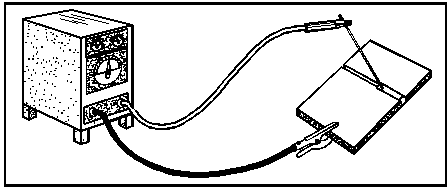
Figure 1-1. Shielded metal arc, or stick welding, requires very simple equipment.
Wire Feed Welding is a blanket term that refers to both Metal Inert Gas Welding (commonly called MIG), Gas Metal Arc Welding (AWS designation GMAW) and Flux Core Arc Welding (AWS designation FCAW). Wire feed welding is used in the same applications as SMAW, but this process applies filler metal at a much higher rate. This is possible because wire feed welding is a continuous feed process without the need to stop to replace burned out electrodes. The ability to weld continuously makes wire feed welding ideal for robotic welding. The continuous feed ability also makes it the easiest and fastest process to learn because it has the fewest variables that the welder needs to control. The simplest tasks can be mastered in a few hours. Wire feed welding requires a DC power supply, which is slightly more complex and more expensive than a basic SMAW power supply. Unlike SMAW power supplies that can be located hundreds of feet away from the weld, wire feed welding machines (and the wire feed mechanism, if separate from the power supply) must be within 15–20' of the weld because, due to friction, the wire feed mechanism cannot force the electrode wire through longer cables. GMAW produces some smoke, but is nearly spatter-free, while FCAW produces more smoke, about the same volume as SMAW, and produces considerable spatter. See Figure 1-2.
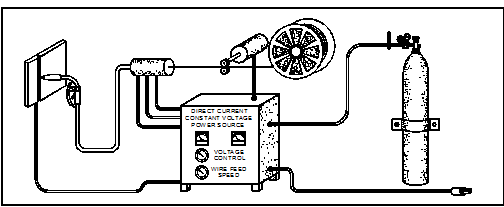
Figure 1-2. Commonly called MIG, wire feed welding equipment is more complex than stick welding equipment, but applies metal faster.
Gas Tungsten Arc Welding (AWS designation GTAW) was refined during WWII in the Southern California aircraft industry for welding aluminum. GTAW (commonly called TIG, for Tungsten Inert Gas) has two important advantages over stick and wire feed welding: First, it welds nearly all metals, and second, it offers the most control of all the processes. With GTAW the welder controls the position of the welding rod, the amount of metal added, the torch position, the travel speed, and the heat input. GTAW—with its foot-control torch heat—allows precise arc current adjustments, giving the welder heat-input control otherwise only available with an oxyacetylene torch. However, GTAW requires more welder skill than other wire-feed processes and has a much lower metal deposition rate. In most cases, though, it is the best way to weld aluminum. Nearly all GTAW welding adds filler metal, but autogenous welds can also be made by fusing parts together without added metal. The combination of inverter technology and microprocessor control has produced high-end GTAW power supplies capable of making welds that were once impossible. GTAW produces a smooth weld with little smoke and no spatter. See
Figure 1-3.
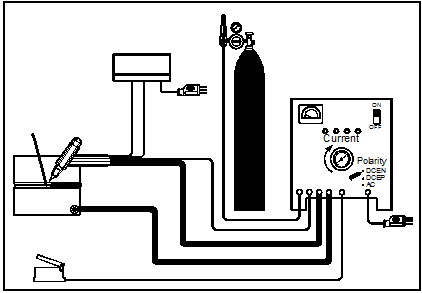
Figure 1-3. GTAW, or TIG welding, requires sophisticated electronics and a skilled welder.
Oxyacetylene Welding (AWS designation OAW) is tied with GTAW for the number of different metals it can join, but oxyacetylene has several advantages. OAW equipment can also braze, braze weld, preheat, anneal, harden, bend, solder, and shrink panels. Because OAW is a relatively slow process with a low deposition rate, many other processes have replaced it in production. Despite this disadvantage, OAW is excellent for many critical repairs. Oxyacetylene equipment requires no electrical power, just the basic cylinders, regulators, hoses and a torch. However, it does require considerable practice to get good results. See Figure 1-4.
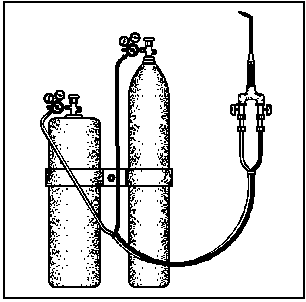
Figure 1-4. Oxyacetylene equipment is much less complex than that of other welding processes, but it requires considerably more skill to achieve good welds.
Table 1-1 compares these four welding processes.
|
Process |
Ease of Learning |
Metal Deposition Rate (1=Highest) |
Precise Weld Control (1=Best) |
Cost of |
Number of Metals Welded (1=Most) |
|
SMAW |
2 |
2 |
3 |
1 |
2 |
|
GMAW/FCAW |
1 |
1 |
4 |
3 |
3 |
|
GTAW |
3 |
4 |
1 |
4 |
1 |
|
OAW |
4 |
3 |
2 |
2 |
1 |
Table 1-1. Comparison of the four most common welding processes.
